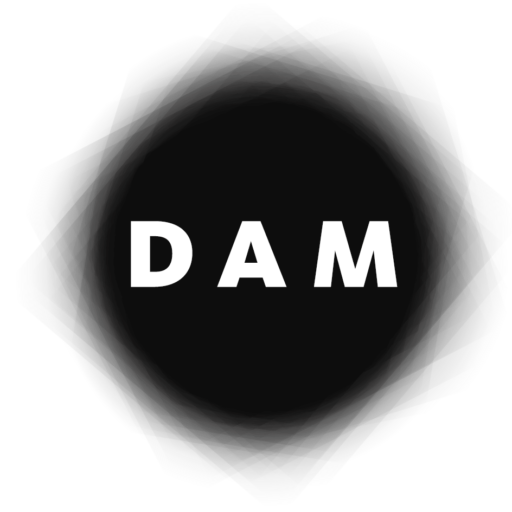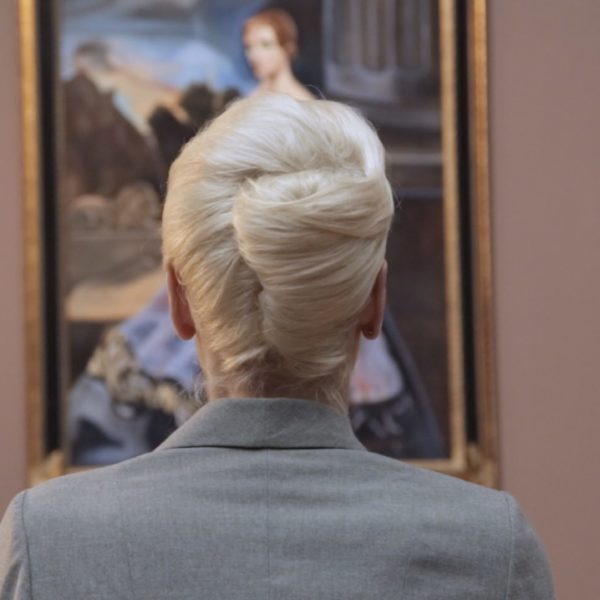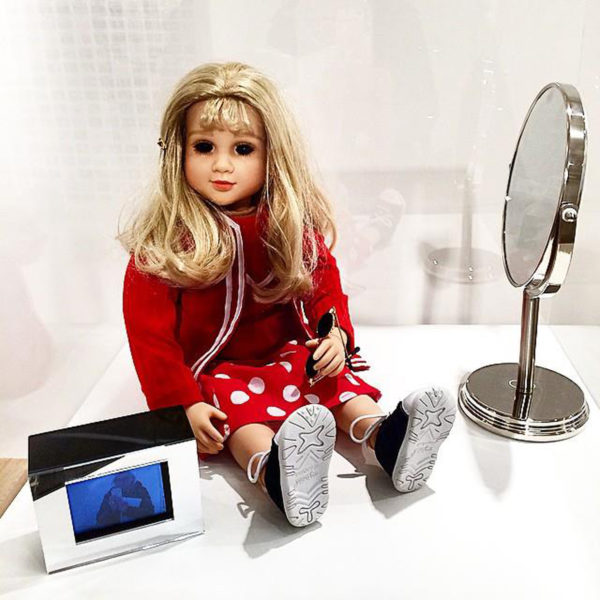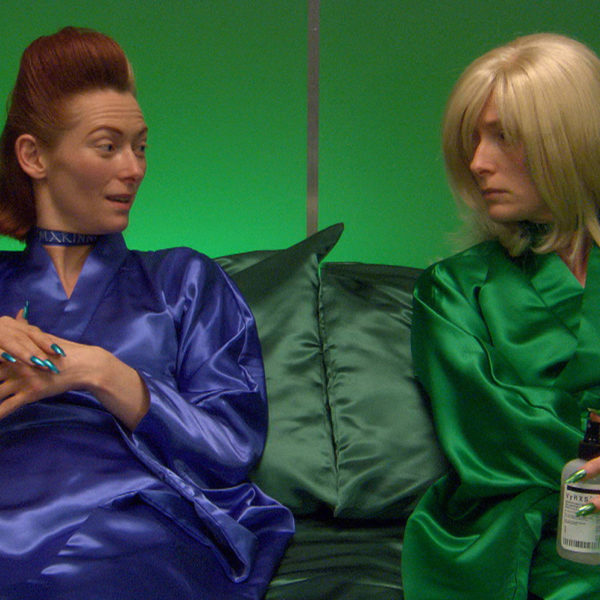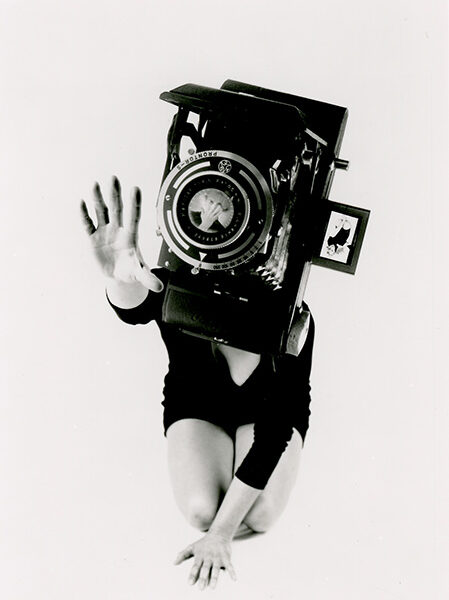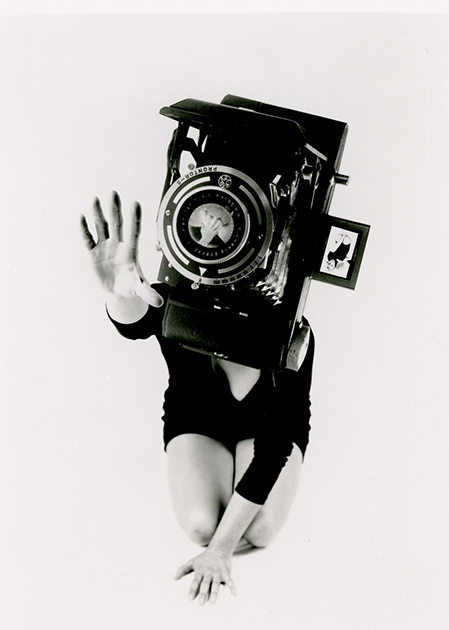
An artist and filmmaker, Lynn Hershman Leeson has made pioneering contributions to photography, film, video, performance, artificial intelligence, bio art, interactive art and net-based art. Her work is focused on key issues of our society, such as identity, surveillance, and the relationship between humans and technology. Her films have received international acclaim at the most prestigious film festivals.
Website of Lynn Hershman Leeson:
www.lynnhershman.com
Shadow Stalker (2019-2021)
Shadow Stalker is a “live” interactive installation that uses algorithms, performance and projections to make visible private Internet systems like Predictive Policing that are increasingly used by law enforcement and promote racial profiling. The installation exists in three parts: a film which outlines the history of Predictive Policing, Digital Identity Theft and the dangers of Data Mining; an installation which creates digital shadows of participants displaying personal information about them retrieved from internet databases with the use of just their email addresses; and a Predictive Policing website created by Francis Tseng that shows the percentage of predicted crimes by zip code. Link to the website here.
Vertighost (2017)
VertiGhost is inspired by and reinterprets Alfred Hitchcock’s film Vertigo (1958) in a multi-part installation about identity and authenticity. A film re-creates key scenes from the film and documents a painting by Amedeo Modigliani whose authenticity has been questioned, alongside interviews about the construction of realities in life and art. The project also consists of an installation and a live web component that incorporates live footage of viewers.
The Infinity Engine (2014)
This installation consists of a functional replica of a genetics lab. Representations and re-enactments of lab tests are on view and printed scaffolds of noses and ears, microscopes, and other types of scientific equipment. Wallpaper of hybrid crops and animals and syringes define one room, and another room allows visitors to read files of legal documents related to genetic engineering. Visitors to the installation can participate in a “capture room,” devised in collaboration with Dr. Josiah P. Zaynor, in which reverse facial-recognition software captures the images of the visitors and reveals their DNA origins and adds the information to an evolving composite archetype.
Artificial Intelligence (1998-2004)
The artist is also among the pioneers in the use of Artificial Intelligence technologies in artistic projects. Inspired by the character Roberta Breitmore, Hershman Leeson develops two female AIs, Agent Ruby (1998-2002), an interactive, artificially intelligent web agent with a female persona, and DiNA (2004), a continuation of Ruby in the form of an artificially intelligent female character able to converse with the viewers, who learns by processing internet content.
Net works (1996-2012)
Pioneering the use of networked data and telepresence to address the issue of surveillance, Hershman Leeson created her first net-based artworks in this period. CybeRoberta (1996) consists of a robotic doll with webcams in her eyes, that can be controlled from a website. Synthia the Stock Ticker (2000) is a networked sculpture in which the behavior of a female character is determined by the changes in the stock market, in real time. Produced at a later moment, Present Tense (2012) feeds on real time networked data to reflect water toxicity in Silicon Valley, addressing the effects of technology on the natural environment and our well being.
Films (1984-2017)
Filmmaking is an important aspect of Lynn Hershman Leeson’s work. She has directed 26 films, of which six are feature-length: First Person Plural, The Electronic Diaries of Lynn Hershman Leeson (1984-1996), a video confessional; Conceiving Ada (1997) and Teknolust (2003) , two films that explore the sci-fi genre from a feminist perspective and address subjects related to biotechnology; Strange Culture (2009), a documentary/docudrama on the case of artist Steve Kurtz, who was accused by the FBI of being a “bioterrorist”; and the documentaries !Women Art Revolution (2012) on the Feminist Art Movement, and Tania Libre (2017) on the activist work of artist Tania Bruguera.
Photography (1984-2004)
The artist has frequently worked with photography, creating collages in analog and digital media. These compositions usually address subjects such as identity, subjectivity, seduction, and the body, in relation to technology and archetypal images of women. In the series Phantom Limb (1985-86) she merges female bodies and machines, while Hero Sandwich (1988) confronts publicity photographs of male and female celebrities, fused by printing layered negatives. She has later created the series Cyborgs (1996), images portraying cybernetic organisms or “cyborgs,” as half-human, robotic femme fatales; and Water Women (2004), which explore the fragile nature of life.
Interactivity (1984-1994)
Hershman Leeson is a pioneer of interactive art, having developed site-specific installations and narrative artworks that responded to the presence or the input of viewers. Lorna (1984) was the first artwork to use laserdisc technology, followed by Deep Contact (1984). Both installations invite the viewer to interact with a fictional woman, either by exploring her world through a pre-recorded narrative or touching her body on a touchscreen. Later, Room of One’s Own (1993) would introduce the concept of surveillance in a piece that tracks the viewer’s eye, while America’s Finest (1990-94) put the spectator in the center of his or her own act of aggression.
Roberta Breitmore (1973-1978)
The artist created the fictional character Roberta Breitmore in 1973, as an alter ego that gradually became real by undertaking real life activities such as checking into a hotel, opening a bank account, obtaining credit carts, renting an apartment, or placing ads in newspapers seeking a roommate. Hershman Leeson carefully designed every aspect of Breitmore’s appearance, including her clothing, makeup, gestures, speech mannerisms, and handwriting. Her activities were documented in 144 drawings and surveillance photographs, as well as other artifacts. The performance ended in 1978 at the Palazzo dei Diamanti in Ferrara, Italy in an exorcism ritual held in the crypt of Lucrezia Borgia. Breitmore inspired fictional personas in other works by Lynn Hershman, such as CybeRoberta (1995-98), Tillie the Telerobotic Doll (1995-98), Synthia the Stock Stalker (2000-03), Agent Ruby (1991-present), DiNA (2004). In 2007, the artist created a new identity for Roberta as Roberta Ware in a virtual exhibition held in the online environment Second Life.
Early work (1967-68)
Hershman Leeson’s early work consisted of sculptures, usually made of wax casts from her face, to which she added sound. Among them, Self Portrait As Another Person (1966-68) is an early interactive work made of a wax cast of the artist’s head, a wig, and a cassette player that activated by a sensor, initiating a dialogue between the viewer and the artwork.
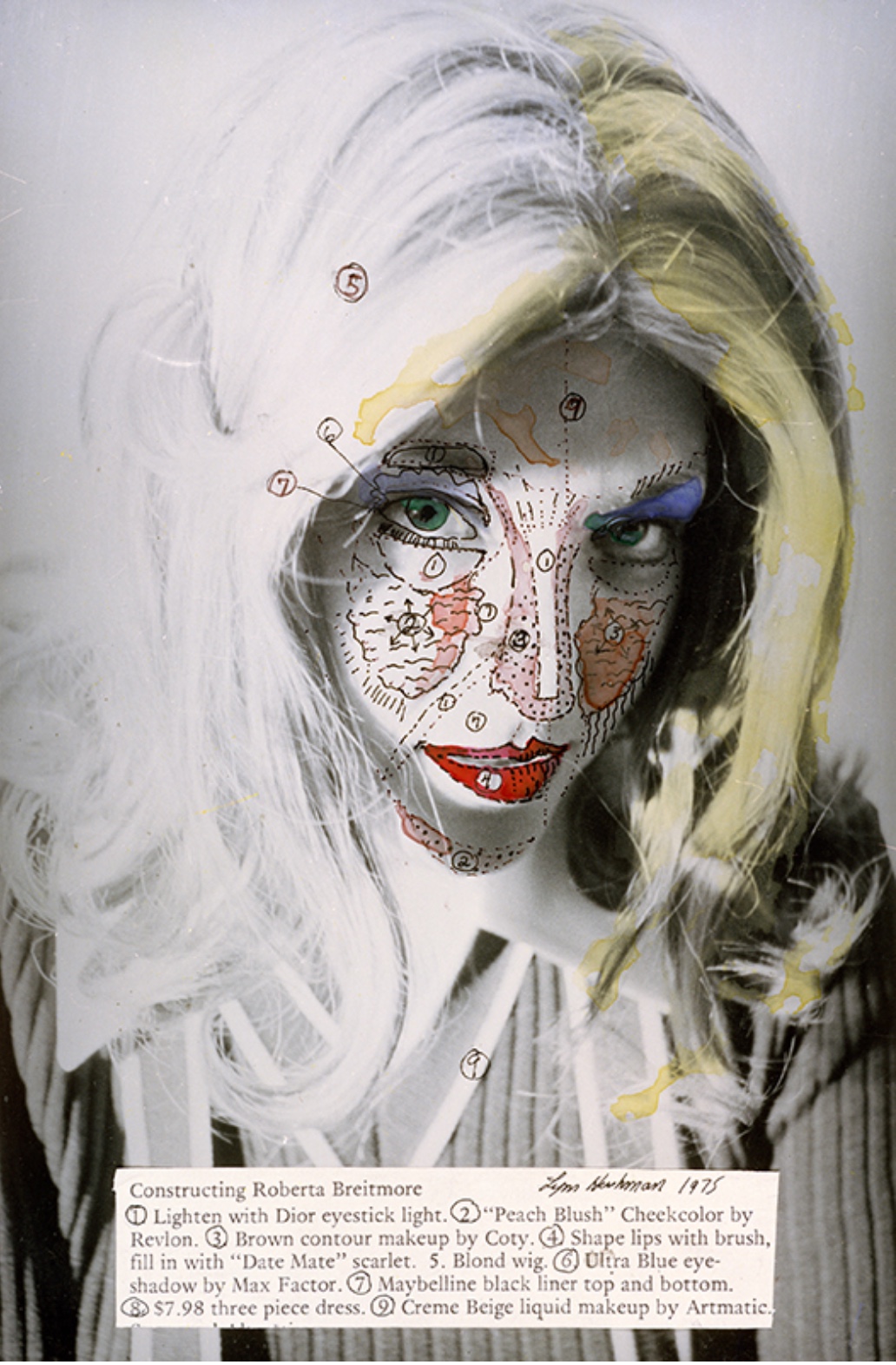
Talk at MOMA NY (1994)
Lynn Heshman Leeson
(excerpts)
… my most relevant work was born on the cusp of disaster.
For example, in 1971, I had an exhibition at the Berkeley art museum. It a work called “Self Portrait as Another Person,” which included audio tapes in which people were interviewed as they approached the work.
The exhibition was closed because I was told that media was not art and did not belong in a museum.
This led me to open a room at the Dante Hotel, where people signed in at the desk, received keys and trespassed a room comprised of fictional essences of an identity. It was site specific, and lasted a year, when someone called the police, who took wax body parts to central headquarters, which seemed like an apt ending to that narrative. I believe it was one of the first site specific pieces in America.
No one saw this as art, until Sophie Calle did a piece somewhat similar 14 years later.
[…]
I created a work that grew out of the Dante, a ten year piece called Roberta Breitmore, which was one of a successive series of works that critics, curators, and dealers also said was not art.
She was a breathing, simulacrumed persona, played first by myself, and then by a series of multiple individuals. Roberta existed in both real life and real time and during the decade of her activity engaged in many adventures that typified the culture in which she participated. […]
Roberta’s manipulated reality became a model for a private system of interactive performance. Instead of a disc or hardware, her records were stored on photographs and texts that could be viewed without predetermined sequences. This allowed viewers to become voyeurs into Roberta’s history. Their interpretations shifted depending on the perspective and order of the sequences.
Everyone thought I was schizophrenic. Almost no one saw this objectification of identity as Art, until Cindy Sherman did something similar 5 years later.
[…]
NEW ART is a reflection of the NEW REALITY. It was not particularly hostile to audiences, as has been the work of other artists, like Jarry, Apollinaire, or Paik. The problem was that delivery systems through which my art would reach its audience was different than one was used to.
[…]
In much of my work I have created a process through which illusion and icon become a simulacrum of origin and authenticity. The illusion IS the substance of truth. One of the more subversive elements of art that uses interactive community based systems is the shift of positioning. Artists who work in this genre are no longer separate from society, but, if effective, create non-hierarchical systems that address fundamental perceptions and REQUIRE responses. […]
Although it is true that showing and making my work has been a persistently and painful process… it usually takes 3-20 years to see, and is instantly obsolete -the process and gestation has given me the advantage of being able to reflect, unencumbered by the constraints of what Tennessee Williams’ writes about in his essay : “The Catastrophe of success” when he was unable to work because of the excessive laudatory reaction to his play.
The market will always find a way to sell the residue of pertinent ideas, but it may take a while. The shift in art making and has gone from a single hand to collaborations and art viewing from single showings to remote multiple participants. Technology has helped the appreciation of work go from omnipotent limited control to individual empowerment and dynamic access.
For me, the miracle is that it has been an extraordinary ride, and that it continues and that I’m even invited here to speak about it, and for this, I’m enormously grateful.
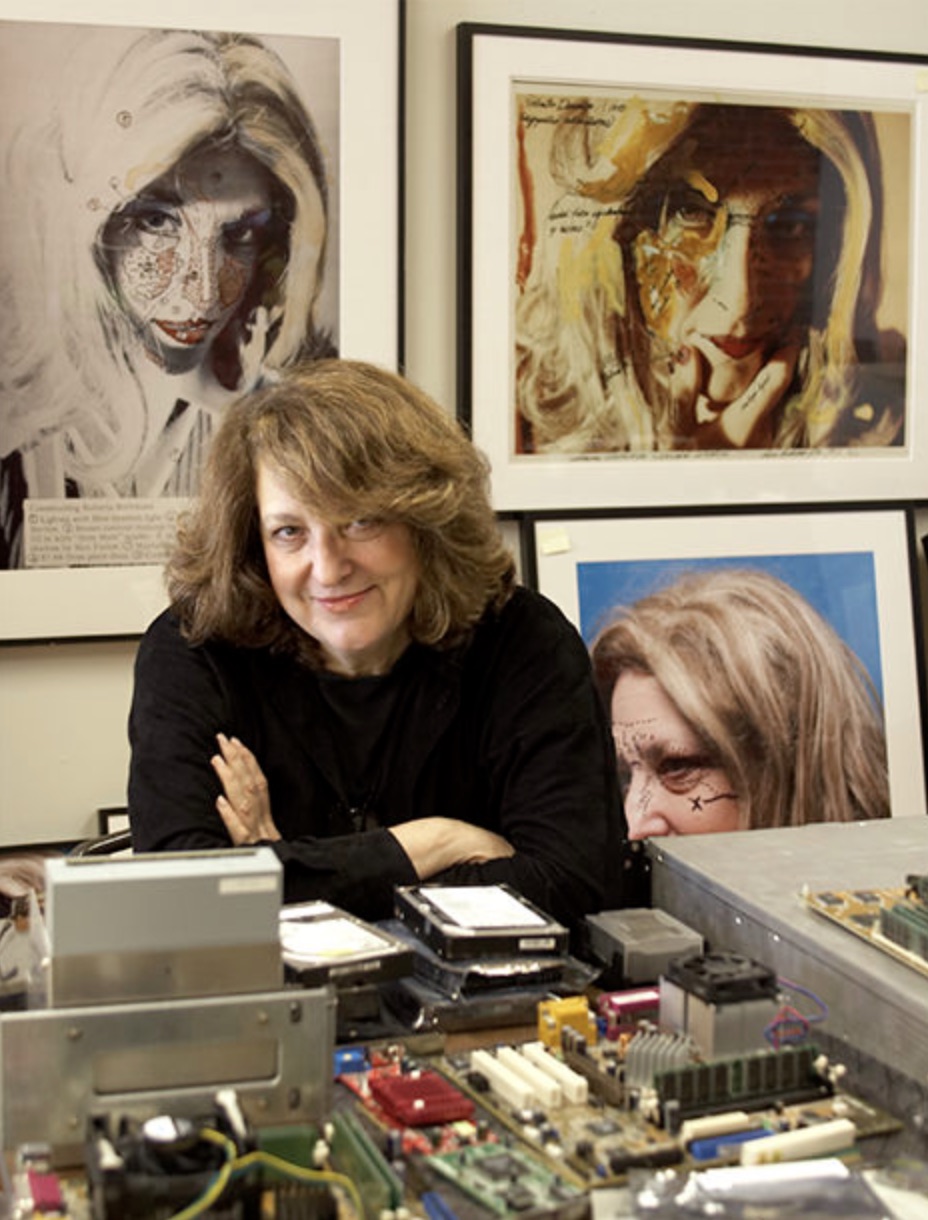
Cleveland, OH (USA), 1941
Lynn Hershman Leeson’s interest in working with technology began when she was 16 years old: an accident while copying a drawing with a Xerox machine resulted in a much more interesting image, and this led her to look for other forms of creating art. In 1963, she earned a bachelor’s degree in Education, Museum Administration and Fine Arts from Case Western Reserve University in Cleveland and began working on sculptures to which she added sound. For instance, Self Portrait As Another Person (1966-68) is an early interactive work made of a wax cast of the artist’s head, a wig, and a cassette player that was activated by a sensor, initiating a dialogue between the viewer and the artwork. The piece was not recognized as art by the curators at the University of California’s Berkeley Art Museum due to her use of media. This rejection led the artist to look for alternative spaces to present her work, such as a hotel room in San Francisco (The Dante Hotel, 1973), or the window displays of the Bonwit Teller department store in New York (Project for Bonwit Teller, 1976). These site-specific installations integrated sound, photography, film, video, computers, and other elements in innovative setups.
In 1972, she completed a Master of Fine Arts from San Francisco State University, and the following year she created her celebrated alter ego, the fictional character Roberta Breitmore. Leeson gave life to Roberta by carrying activities that left traces of her existence, such as opening a bank account, renting an apartment, and placing ads in local newspapers. Breitmore would cease to exist as a long-term performance in 1979, but she later multiplied into several other identities: CybeRoberta (1995-98), Tillie the Telerobotic Doll (1995-98), Synthia the Stock Stalker (2000-03), Agent Ruby (1991-present), DiNA (2004), and The Infinity Engine (2014). In the 1980s, Leeson created other female characters with which she continued exploring interactivity using the most advanced media at the time. Lorna (1984) was the first artwork to use laserdisc technology, followed by Deep Contact (1984). Both installations invite the viewer to interact with a fictional woman, either by exploring her world through a pre-recorded narrative or touching her body on a touchscreen. During these years she also worked in photography, creating collages with analog techniques, as in the series Phantom Limb (1985-86), in which she merges female bodies and machines.
In the 1990s, Leeson develops her first net-based artworks. CybeRoberta (1996) combines her early wax sculptures and the subject of surveillance developed in interactive installations such as Room of One’s Own (1993) in a robotic doll with webcams in her eyes, that can be controlled from a website. Synthia the Stock Ticker (2000) is a networked sculpture in which the behavior of a female character is determined by the changes in the stock market, in real time. By the end of the decade, the artist directs her attention to Artificial Intelligence with Agent Ruby (1998-2002), an interactive, artificially intelligent web agent with a female persona. Ruby is part of the expanded cinema project Teknolust, a film written and directed by Leeson in 2003, starring Tilda Swinton. The actor also lent her voice and features to DiNA (2004), a continuation of Ruby in the form of an artificially intelligent female character able to converse with the viewers, who learns by processing internet content.
In these same years, Leeson is developing her work as a filmmaker with a series of feature films that will be met with international acclaim and screened at prestigious films festivals, such as the Sundance Film Festival, Toronto Film Festival and The Berlin International Film Festival, among others. In Conceiving Ada (1997) and Teknolust, she explores the sci-fi genre from a feminist perspective and addresses subjects related to biotechnology, which she later reprises in the documentary Strange Culture (2009), on the case of artist Steve Kurtz, who was accused by the FBI of being a “bioterrorist.” Lesson’s latest films move away from fiction to fully enter the documentary genre, dealing with social and political issues: !Women Art Revolution (2012) addresses the Feminist Art Movement, while Tania Libre (2017) focuses on the activist work of artist Tania Bruguera.
Leeson has continued exploring biotechnologies, namely genetics research, in her installation The Infinity Engine (2014), partially commissioned by the ZKM | Center for Art and Media Karlsruhe, and surveillance in the interactive installation Shadow Stalker (2018-2021). Her work is featured in the public collections of the Museum of Modern Art, The San Francisco Museum of Modern Art, The Zentrum fur Kunst und Medientechnologie, the Los Angeles County Museum of Art, The Tate Modern, The National Gallery of Canada, and the Walker Art Center, among others. She is a recipient of a Siggraph Lifetime Achievement Award, Prix Ars Electronica Golden Nica, and a John Simon Guggenheim Memorial Foundation Fellowship. In 2017 she received a USA Artist Fellowship, the San Francisco Film Society’s “Persistence of Vision” Award and will receive the College Art Association’s Lifetime Achievement Award. She is the recipient of the DAM Digital Art Award (2010), which honours the most important artists in the area of digital art for their life’s work or for an important group of works. Other recipients of the award are Norman White, Manfred Mohr, and Vera Molnar.

Hershman Leeson, L. (2016). On the Cusp of Disaster. Sloan Science and Film. New York: Museum of the Moving Image. [EN]
–– (2014). The Terror of Immortality. Lynn Hershman Leeson. [EN]
–– (2000). Teknolust Director’s Statement. Lynn Hershman Leeson. EN]
–– (1994). Some Thoughts on the Data Body. In: Lovejoy, M., Paul, C., and Vesna, V. (2011). Context Providers. [EN]
–– (1994). Romancing the Anti-body: Lust and Longing in (Cyber)space. Lynn Hershman Leeson. [EN]
–– (1990). The Fantasy Beyond Control. In: Illuminating Video: An Essential Guide to Video Art. New York: Aperture/BAVC. [EN]
–– (1985). Politics and Interactive Media Art. Journal of Contemporary Studies. San Francisco [EN]
Kim, E. (2018). Embodiments of Autonomous Entities: Lynn Hershman Leeson’s Artificially Intelligent Robots, Agent Ruby and DiNA. New York: New York University. [EN]
Glaser-Koren, M. (2017). Lynn Hershman Leeson’s Roberta Breitmore and the Art of Becoming a Woman. San José: San José State University. [EN]
